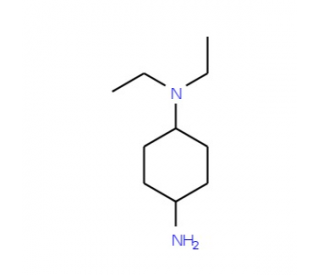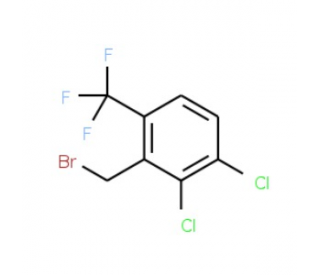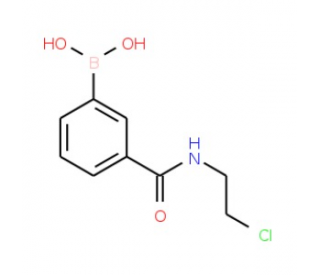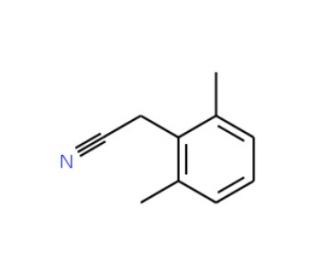詳細說明
Purity
>95%, by SDS-PAGE under reducing conditions and visualized by Colloidal Coomassie? Blue stain at 5 μg per lane
Endotoxin Level
<1.0 EU per 1 μg of the protein by the LAL method.
Activity
Measured by its ability to hydrolyze UDP-Glucose. The specific activity is >45 pmol/min/μg, as measured under the described conditions. See Activity Assay Protocol on www.RnDSystems.com
Source
E. coli-derived Met1-Leu543, with a C-terminal 6-His tag
Accession #
N-terminal Sequence
AnalysisSer2
Predicted Molecular Mass
64 kDa
SDS-PAGE
60-65 kDa, reducing conditions
6246-GT |
| |
Formulation Supplied as a 0.2 μm filtered solution in Tris and NaCl. | ||
Shipping The product is shipped with polar packs. Upon receipt, store it immediately at the temperature recommended below. | ||
Stability & Storage: Use a manual defrost freezer and avoid repeated freeze-thaw cycles.
|
Assay Procedure
Materials
Assay Buffer: 25 mM Tris, 150 mM NaCl, 10 mM MnCl2, 5 mM CaCl2, 150 mM K2SO4, pH 7.5
Recombinant C. difficile Toxin 1B/TcdB (rCdTcdB) (Catalog # 6246-GT)
Coupling Enzyme: Recombinant Human CD39L3/ENTPD3 (rhCD39L3) (Catalog # )
Substrate: UDP-Glucose (Calbiochem, Catalog # 670120), 10 mM stock in 25% ethanol
Malachite Green Phosphate Detection Kit (Catalog # )
96-well Clear Plate (Costar, Catalog # 92592)
Plate Reader (Model: SpectraMax Plus by Molecular Devices) or equivalent
Dilute UDP-Glucose to 1.6 mM in Assay Buffer.
Dilute rhCD39L3 to 16 μg/mL in Assay Buffer.
Prepare reaction mixture by combining 200 μL UDP-Glucose and 200 μL rhCD39L3 (sufficient for ~15 wells).
Dilute rCdTcdB to 10 μg/mL in Assay Buffer.
Dilute 1 M Phosphate Standard by adding 10 μL of the 1 M Phosphate Standard to 990 μL of deionized water for a 10 mM stock. Continue by adding 10 μL of the 10 mM Phosphate stock to 990 μL of Assay Buffer for a 100 μM stock (this is the first dilution of the standard curve).
Prepare six additional one-half serial dilutions of the 100 μM Phosphate stock in Assay Buffer. The standard curve has a range of 0.078 to 5.0 nmol per well.
Load 50 μL of each dilution of the standard curve into a plate. Include a curve blank containing 50 μL of Assay Buffer.
Load 25 μL of the 10 μg/mL rCdTcdB into the plate. Include a substrate blank containing 25 μL of Assay Buffer.
Add 25 μL of reaction mixture to the wells, excluding the standard curve.
Cover the plate with parafilm or a plate sealer and incubate at room temperature for 40 minutes.
Add 30 μL of the Malachite Green Reagent A to all wells. Mix and incubate for 10 minutes at room temperature.
Add 100 μL of deionized water to all wells.
Add 30 μL of the Malachite Green Reagent B to all wells. Mix and incubate for 20 minutes at room temperature.
Read plate at 620 nm (absorbance) in endpoint mode.
Calculate specific activity:
Specific Activity (pmol/min/μg) = | Phosphate released* (nmol) x (1000 pmol/nmol) |
| Incubation time (min) x amount of enzyme (μg) |
*Derived from the phosphate standard curve using linear or 4-parameter fitting and adjusted for Substrate Blank.
Per Well:
rCdTcdB: 0.25 μg
rhCD39L3: 0.2 μg
Substrate: 400 μM
Background: Toxin B/TcdB
Clostridium difficile is the leading cause of hospital-acquired diarrhea, known as C. difficile-associated disease. The estimated number of cases of C. difficile-associated disease exceeds 250,000 per year (1), with health care costs approaching US $1 billion annually (2). The major virulence factors produced by C. difficile are two toxins, TcdA and TcdB. Both toxins can monoglucosylate and inactivate Rho family small GTPases within target cells, leading to disruption of vital signaling pathways in the cell, subsequently causing diarrhea, inflammation, and damage of colonic mucosa (3, 4, 5). Both toxins have a similar tripartite structure comprised of an N?terminal glucosyltransferase domain, a C-terminal receptor binding domain, and a small hydrophobic span possibly involved in toxin translocation (6). Our recombinant TcdB consists of the enzymatic domain. Both TcdA and TcdB also have potassium-dependent UDP-Glc hydrolase activity, which is essentially glucosyltransferase activity with water as the acceptor molecule (7). Under same conditions, UDP-glucose hydrolysis by TcdB occurs at a rate about 5-fold greater than that of TcdA.
References:
Wilkins, T.D. and Lyerly, D.M. (2003) J. Clin. Microbiol 41:53.
Kyne, L. et al. (2002) Clin. Infect. Dis. 34:346.
Voth, D.E. and Ballard, J.D. (2005) Clin. Microbiol. Rev. 18:247.
Chaves-Olarte, E. et al. (1996) J. Biol. Chem. 271:6925.
Just I, et al. (1995) J. Biol. Chem. 270:13932.
Hammond, G.A. and Johnson, J.L. (1995) Microb. Pathog. 19:203.
Ciesla, W.P. Jr. and Bobak, D.A. (1998) J. Biol. Chem. 273:16021.
Entrez Gene IDs:
4914074 (C. difficile)
Alternate Names:
TcdB; toxB











 粵公網(wǎng)安備44196802000105號
粵公網(wǎng)安備44196802000105號